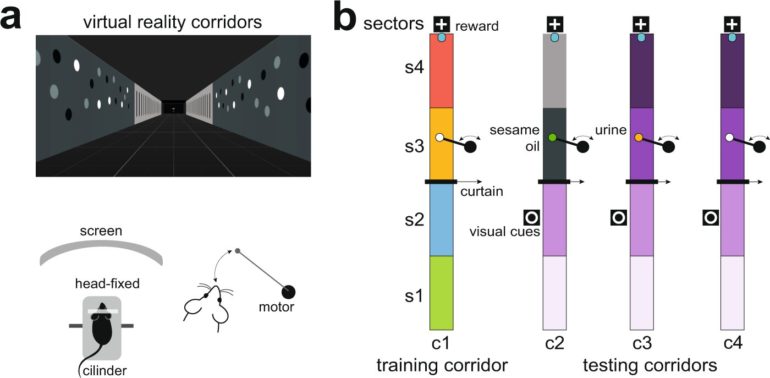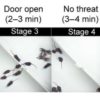Published recently in Nature Communications, a new study used a model of rodents and connected the influence of feronomic signals on memory for the first time. This will make it possible to explore the deficits of integration of spatial memories and social studies in transgenic models of Alzheimer’s disease in the future. The research, directed by professors Enrique Lanuza (Faculty of Biological Sciences) and Vicent Teruel Martí (Faculty of Medicine and Dentistry), has been carried out entirely by research staff from the University of Valencia.
The evidence shows that the generation of the memory of an event or an experience includes various types of information, such as where it happened (spatial component) or who was involved (social component), but how these components are integrated in the brain is still a mystery.
The researchers demonstrated that social and spatial memory are integrated into a circuit formed by three neural structures: the amygdala (part of the brain responsible for emotional reactions), the entorhinal cortex (memory and orientation) and the hippocampus (also related to memory and learning). In the case of rodents, individual recognition depends on pheromonal signals, and this is the first study that shows to what extent this type of information influences memory.
According to Vicent Teruel and Enrique Lanuza, “We humans probably use the same neural circuit to integrate social and spatial information, although in our case, the recognition of individuals is based on visual information instead of through the detection of pheromones by our olfactory system, as in the case of rodents.”
The methodological approach included multidisciplinary and neuroanatomical, neurophysiological, molecular biology and behavior analysis techniques, the latter using a novel open-source system based on deep learning. Part of the electrophysiological recordings were carried out in a virtual reality environment adapted for rodents, which allowed them to virtually walk through corridors while they were presented with visual or olfactory stimuli in a very controlled way. The enormous amount of data derived from these experiments has illuminated the role of the neural substrate for the integration of the different components of episodic memory, which will allow researchers to know details of this complex cognitive process.
The emotional processing of olfactory stimuli in mice described for the first time
More information:
María Villafranca-Faus et al, Integrating pheromonal and spatial information in the amygdalo-hippocampal network, Nature Communications (2021). DOI: 10.1038/s41467-021-25442-5
Citation:
The influence of pheromonal signals on memory generated in the hippocampus (2021, September 7)
retrieved 7 September 2021
from https://medicalxpress.com/news/2021-09-pheromonal-memory-hippocampus.html
This document is subject to copyright. Apart from any fair dealing for the purpose of private study or research, no
part may be reproduced without the written permission. The content is provided for information purposes only.



